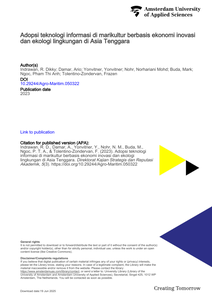Peat swamp forests in Southeast Asia are under heavy pressure. Deforestation, forest degradation, wildfires, and drainage have damaged or destroyed substantial areas of the once extensive peat swamp forest formations. Several efforts are underway to rehabilitate degraded peat forests areas in order to restore some of the valuable ecosystem services these forested areas once provided. However, these efforts often result in (mixed)-plantations that only partly resemble the original peat forests. Information about these peat swamp forests' complex origin and ecology is needed to improve restoration outcomes further. Our paper analyses historical data from coastal peat swamp forests in Sarawak and Brunei and discusses the potential to use this as the reference value for intact peat forests. We describe the observed stand structure and species composition for pristine peat swamp forest, and we analyze the population structure of three dominant peat swamp forest species: Gonystylus bancanus (ramin), Dactylocladus stenostachys (jongkong) and Shorea albida (alan batu). We compare the historical data with data from recently measured, degraded peat swamp forests. We discuss our results in relation to processes of peat dome formation, nutrient availability and hydrology, and give recommendations for peat swamp forest management and restoration.
MULTIFILE

Isu KunciPolicy Brief ini memuat poin-poin penting sebagai berikut :1) Adopsi teknologi informasi untuk industri perikanan.2) Pentingnya ekonomi inovasi pada rantai nilai budidaya perikanan laut dan darat.3) Evaluasi teknik budidaya dan ekologi lingkungan dalam memilih teknologi informasi.RekomendasiPenerapan teknologi informasi pada di Marineculture di Asia Tenggara, yang berfokus pada inovasi ekonomi dan ekologi lingkungan, sangat penting bagi pembangunan berkelanjutan. Rekomendasi yang diberikan adalah melalui pendekatan dan aplikasi: (1) Transformasi Digital. Hal ini mencakup peningkatan infrastruktur, promosi e-commerce, dan pengembangan kewirausahaan digital. (2) Pengembangan Sains, Teknologi & Inovasi: harus dipandang sebagai investasi untuk mendorong pertumbuhan ekonomi dan kemajuan teknologi berbasis Ekonomi Digital. (3) Adopsi dilakukan dengan Transisi Ramah Lingkungan agar pengembangan teknologi berkontribusi terhadap ekologi lingkungan. (4) Dukungan penuh dari pemerintah melalui kebijakan pemberian kredit finansial dan penyuluhan tentang aplikasi teknologi berbasi IoT kepada pembudidaya ikan kecil. Oleh karena itu, negara-negara Asia Tenggara harus memanfaatkan teknologi untuk inovasi ekonomi sambil memastikan kelestarian lingkungan melalui penerapan praktik dan kebijakan ramah lingkungan.
DOCUMENT

Purpose – Set in the newly emerging hybrid product research stream, and reflecting trends towards multi-national production and sourcing, this paper aims to present a three-country study on perceived quality and image of automobiles “made in and for” Southeast Asia. Design/methodology/approach – The authors used a multiple cue design in the stimulus definition, reflecting assembly and component origin plus warranty level. Actual car owners were targeted, thereby adding to a relatively low number of studies requiring actual prior purchase. The related face-to-face interviews in the local languages resulted in 720 usable questionnaires. Findings – Country-of-assembly is shown to affect perceived quality as well as perceived image. Warranty extension can moderate the quality effects to some extent, whilst buyers of luxury models display a smaller positive home bias in terms of perceived image than those of non-luxury models. Such home region bias is not demonstrated to be significant for country-of-components. Research limitations/implications – The paper contributes towards ongoing theory-building, especially with regards to an optimum level of origin cue decomposition. It also establishes the importance of adding image perception measurement to the arsenal of origin researchers normally focused on quality effects. Practical implications – Managers need to make strategic decisions on the decomposition of product origin cues, reflecting consumers' abilities to notice several such cues. The selected product origin cues must then be supported with appropriate communications strategies. Originality/value – For the first time, origin effects are demonstrated for the Southeast Asia region. The paper establishes the significance of country-of-target and contributes to research on the ever more complex product origin construct.
LINK